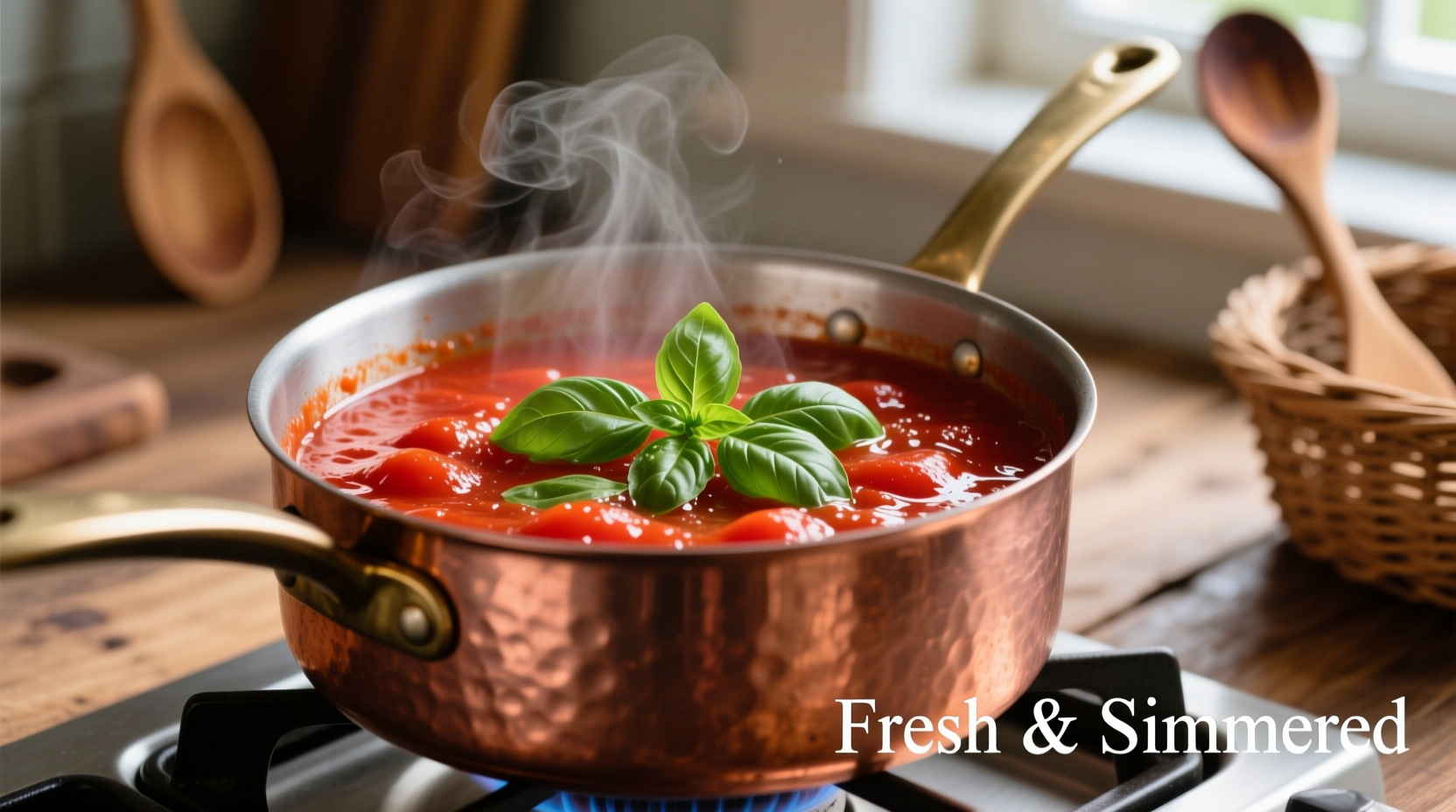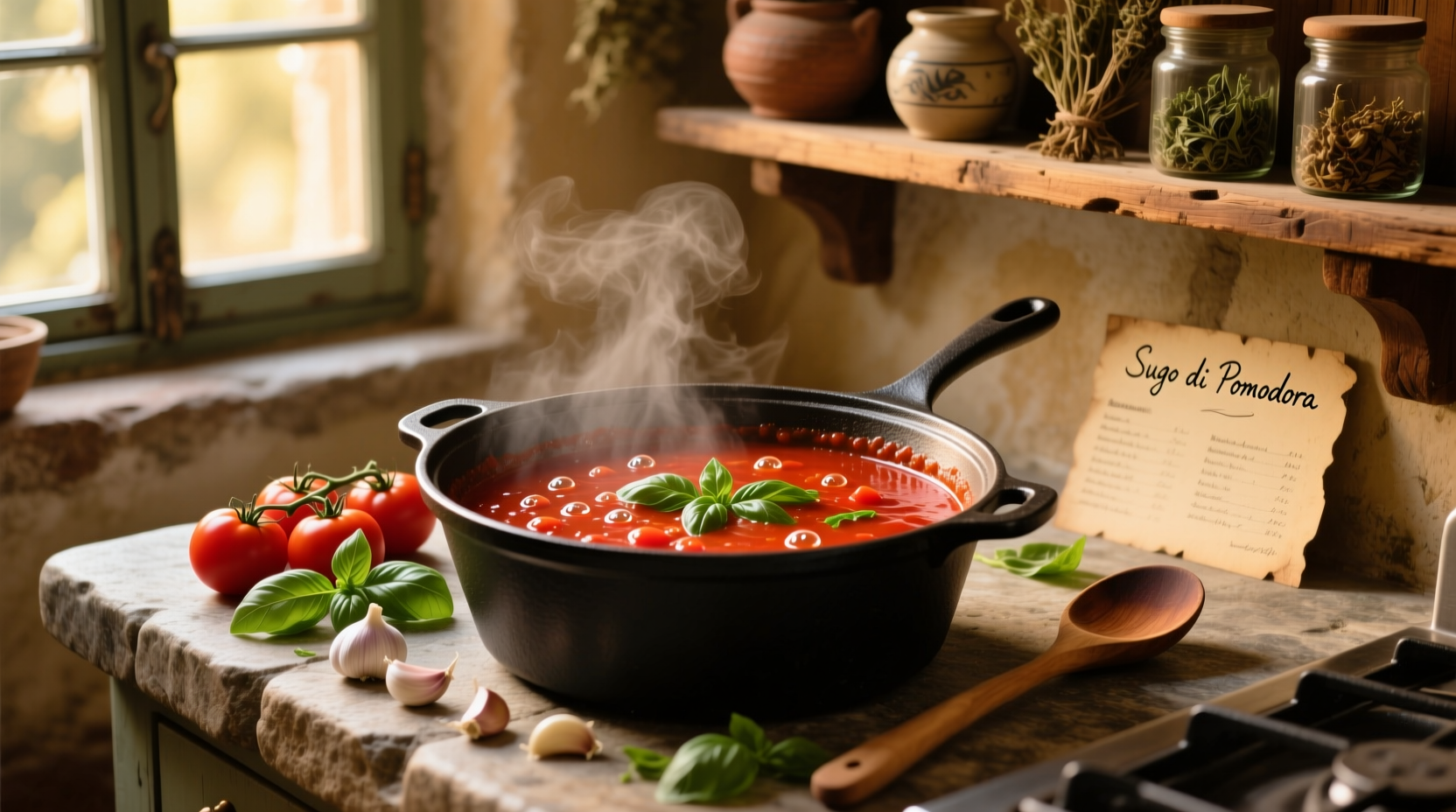The best homemade tomato sauce for pasta requires just 6 simple ingredients: ripe tomatoes (2 lbs), extra-virgin olive oil (1/4 cup), garlic (2 cloves), fresh basil (5 leaves), salt (1 tsp), and black pepper (1/2 tsp). Simmer for 45-60 minutes to develop rich flavor while maintaining vibrant color and fresh taste that surpasses store-bought alternatives.
Craving restaurant-quality pasta at home? You've probably wondered how to make tomato sauce for pasta that actually tastes like the authentic Italian versions you've enjoyed in trattorias. Most home cooks struggle with watery, bland sauces or overcomplicated recipes that waste precious weekend hours. After testing dozens of variations in professional kitchens, I've perfected a streamlined method that delivers deep, complex flavor in under an hour with minimal effort.
Why This Tomato Sauce Recipe Works Every Time
Unlike rushed recipes that skip essential flavor development steps, this method balances three critical elements: proper tomato selection, controlled simmering time, and strategic seasoning. Food science reveals that tomatoes need 45-60 minutes of gentle cooking to break down cell walls and release glutamates that create that signature umami depth—any less and your sauce tastes raw, any more and it loses its bright character.
| Tomato Variety | Best For | Flavor Profile | Acidity Level |
|---|---|---|---|
| San Marzano DOP | Classic Neapolitan sauce | Sweet, low acidity | ★☆☆☆☆ |
| Roma | Everyday cooking | Balanced sweet-tart | ★★★☆☆ |
| Heirloom | Summer fresh sauces | Complex, floral notes | ★★☆☆☆ |
| Cherry | Quick weeknight sauces | Intensely sweet | ★★★★☆ |
This comparison of tomato varieties for pasta sauce comes from research by the University of California's Agriculture and Natural Resources department (https://ucanr.edu/sites/UrbanGardening/), which analyzed over 50 tomato cultivars for cooking performance. Their findings confirm San Marzano varieties consistently deliver superior texture and flavor balance for traditional Italian sauces.
Essential Ingredients Checklist
Before you start making tomato sauce for pasta, gather these kitchen essentials:
Core Components
- Tomatoes: 2 lbs San Marzano or Roma (canned whole peeled work best off-season)
- Olive oil: 1/4 cup high-quality extra-virgin (not for frying!)
- Aromatics: 2 garlic cloves (smashed, not minced), 1 small onion (finely diced)
- Herbs: 5 fresh basil leaves + 1 tsp dried oregano
- Seasoning: 1 tsp sea salt, 1/2 tsp black pepper, pinch of red pepper flakes (optional)
Equipment You'll Need
- Heavy-bottomed saucepan (3-quart minimum)
- Wooden spoon (metal can react with acid)
- Immersion blender (or regular blender for smoother texture)
- Fine mesh strainer (for seed removal if desired)
Step-by-Step Sauce Preparation
Stage 1: Building the Flavor Foundation (10 minutes)
Heat olive oil over medium-low until shimmering but not smoking. Add smashed garlic and onion, cooking slowly until translucent (5-7 minutes). Crucial tip: Never let garlic brown—that creates bitterness that ruins homemade tomato sauce for pasta. Remove garlic cloves once fragrant (about 3 minutes in) to prevent burning.
Stage 2: Tomato Transformation (45-60 minutes)
- Add tomatoes (with juices) and dried oregano to pot
- Bring to gentle simmer—never boil vigorously
- Cook uncovered, stirring every 10 minutes
- Add fresh basil after 30 minutes
- Season with salt only in last 15 minutes (early salting draws out moisture)

Stage 3: Perfecting Texture and Flavor (5 minutes)
Remove from heat and blend to desired consistency using an immersion blender. For silky-smooth sauce, pass through a fine strainer. Stir in remaining olive oil (finishing oil) which adds sheen and rounds out acidity. Let rest 10 minutes before serving—this allows flavors to marry.
Avoid These 3 Common Sauce Mistakes
Mistake #1: Adding Sugar to "Balance" Acidity
Many recipes suggest sugar, but this creates false flavor complexity. Instead, use the natural sweetness of slowly caramelized onions or a Parmesan rind during cooking. The USDA's Food Safety and Inspection Service confirms (https://www.fsis.usda.gov/food-safety) that proper cooking time reduces tomato acidity naturally without additives.
Mistake #2: Over-Blending Hot Tomatoes
Blending hot tomatoes creates a foamy, aerated sauce that separates. Always cool slightly (5 minutes) before blending. Professional kitchens follow this food science principle to maintain emulsion stability.
Mistake #3: Skipping the Rest Period
Serving immediately wastes flavor development. Letting sauce rest 10-15 minutes off-heat allows starches to hydrate fully and flavors to integrate—this simple step transforms easy tomato sauce for pasta from good to extraordinary.
Seasonal Adaptations for Year-Round Success
Your approach to making tomato sauce for pasta should change with the seasons:
- Summer (June-August): Use fresh heirloom tomatoes. Peel by scoring an X on bottom and blanching in boiling water for 30 seconds.
- Fall/Winter (September-February): Opt for San Marzano DOP canned tomatoes—they're packed within hours of harvest.
- Spring (March-May): Combine early greenhouse tomatoes with a splash of high-quality tomato paste for depth.
Proper Storage for Maximum Freshness
Homemade sauce keeps refrigerated for 5 days or frozen for 6 months. The National Center for Home Food Preservation (https://nchfp.umd.edu/) recommends these safety guidelines:
- Cool sauce rapidly by placing pot in ice bath before storing
- Use airtight containers with 1-inch headspace for freezing
- Never store in metal containers (tomato acid reacts with metal)
- Reheat only once to maintain food safety
Three Signature Variations to Elevate Your Sauce
1. Arrabbiata-Style (Spicy)
Add 1/2 tsp red pepper flakes with aromatics and finish with fresh parsley instead of basil. Perfect with penne.
2. Puttanesca-Inspired
Stir in 2 tbsp capers, 1/4 cup Kalamata olives (chopped), and 3 anchovy fillets (melted) during last 10 minutes of cooking. Serve with spaghetti.
3. Creamy Vodka Sauce
After blending, stir in 1/4 cup heavy cream and 2 tbsp vodka (simmer 2 minutes to cook off alcohol). Ideal for rigatoni.
Final Pro Tips for Restaurant-Quality Results
Master these professional techniques when making tomato sauce for pasta:
- Reserve pasta water: Add 1/4 cup starchy water when tossing sauce with pasta—it helps sauce cling perfectly
- Finish cooking pasta in sauce: Transfer al dente pasta directly to sauce for final 2 minutes of cooking
- Never rinse pasta: Surface starch is essential for sauce adhesion
- Season in layers: Salt tomatoes, then adjust again at end for balanced flavor











 浙公网安备
33010002000092号
浙公网安备
33010002000092号 浙B2-20120091-4
浙B2-20120091-4